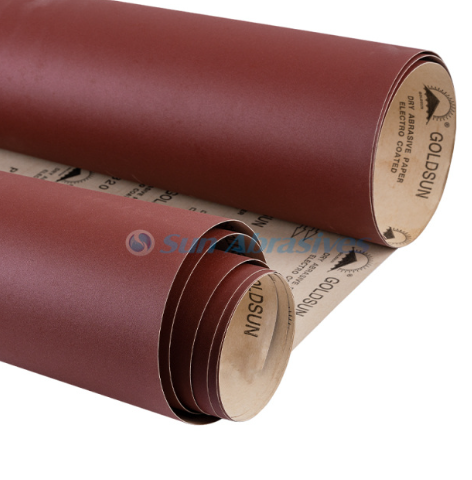Sand Paper Transforming Roughness into Refinement
Time:
2025-07-14 00:00
Source:
Sand paper, a familiar sight in workshops and toolboxes around the world, has been a trusted ally for anyone working on surface preparation and finishing for centuries. Despite its simple - sounding name, which might lead you to think it’s just sand glued to paper, sand paper is a sophisticated and highly versatile product with a wide range of applications.
The origins of sand paper can be traced back to ancient times, when people first started using natural sand as an abrasive material. Over the years, the technology has evolved significantly. While some sand paper still incorporates natural sand, most modern versions use synthetic abrasives such as aluminum oxide, silicon carbide, and zirconia alumina. These synthetic materials offer superior cutting performance, longer lifespan, and more consistent results, making them the preferred choice for industrial and home use alike.

Sand paper is made by bonding abrasive grains to a backing material, which can be paper, cloth, or film. The choice of backing depends on the intended use of the sand paper. For light - duty tasks like sanding drywall or applying a light finish to wood, a paper backing is sufficient. It’s flexible, easy to handle, and gets the job done without breaking the bank. For more demanding applications, such as sanding metal or heavy - duty woodworking projects, a cloth or film backing is often preferred. These materials are more durable, resistant to tearing, and can withstand the rigors of heavy - duty sanding.
The applications of sand paper are as diverse as the materials it works on. In woodworking, it’s one of the most fundamental tools. From the moment a piece of lumber is cut, sand paper comes into play. Coarse - grit sand paper is used to quickly shape the wood, remove rough edges, and smooth out any imperfections. It’s like the rough draft of a masterpiece, getting rid of the big flaws and creating a basic shape. As the project progresses, finer and finer grits of sand paper are used, each one refining the surface a little more. By the time you reach the final stages, a super - fine grit sand paper is used to create a smooth, flawless finish that’s ready for staining, painting, or varnishing.
In the painting industry, sand paper is an essential part of the surface preparation process. Before applying paint to any surface, whether it’s a wall, a piece of furniture, or a metal object, sanding is crucial. Sand paper helps to roughen up the surface, which allows the paint to adhere better. It also removes any bumps, ridges, or old paint flakes, creating a smooth, even base for the new coat of paint. Different surfaces require different types of sand paper. For example, drywall needs a finer - grit sand paper to avoid damaging the delicate surface, while metal surfaces can handle coarser grits to remove rust and scale.
Metalworking is another area where sand paper proves its worth. It’s used to clean and prepare metal surfaces for further processing. Whether it’s a small metal part for a machine or a large metal sculpture, sand paper can remove rust, burrs, and other imperfections. It can also be used to create a specific texture on metal surfaces, which is useful for decorative purposes or for improving grip. For instance, sand paper can be used to give a metal handle a rough, textured surface that’s easier to hold.
The grit system of sand paper is what makes it so adaptable to different tasks. Lower grit numbers mean larger abrasive particles, which are more aggressive and suitable for heavy - duty sanding jobs. Higher grit numbers, on the other hand, indicate smaller particles and are used for fine finishing work. It’s like a set of different - sized brushes for an artist; each grit has its own purpose and can be used to achieve a specific result.
Related News
undefined



